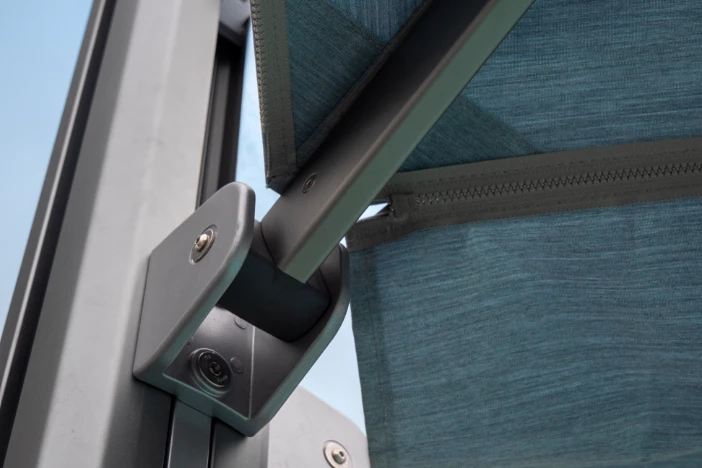
High-quality outdoor umbrellas start with the material
It’s easy to look nice and work well for a season or two. But, the real test for a deck umbrella is its ability to withstand the elements for many years. Constant exposure to the sun, wind and rain separates the pros from the pretenders. Great design is important. However, even the best shades won’t last if they are made from poor materials. Your climate also affects which shades are best for your space.
What pole or frame material is best for a shade umbrella?
Choosing the material for your umbrella frame is really about establishing your priorities. Are you trying to match the look of your outdoor furniture set? Are you most concerned about durability in a moist or windy environment? Or, do you want to complement your home’s landscape and architectural design? Heck, you might simply want to help your favorite canopy fabric really “pop.” Wood, aluminum and fiberglass are the primary materials used to construct garden umbrella poles and frames. Each material has unique benefits and characteristics, so compare and contrast them to determine which best suits your needs.
Wood
Wooden umbrellas have classic, timeless appeal. Their natural, sophisticated look works well in lush green environments, where nature is at the forefront. A well-maintained wooden umbrella is a beautiful accent to rich woodgrain furniture and a hardwood deck. The most common hardwoods used are teak, eucalyptus and bamboo. However, these costly raw materials make wood umbrellas very expensive.
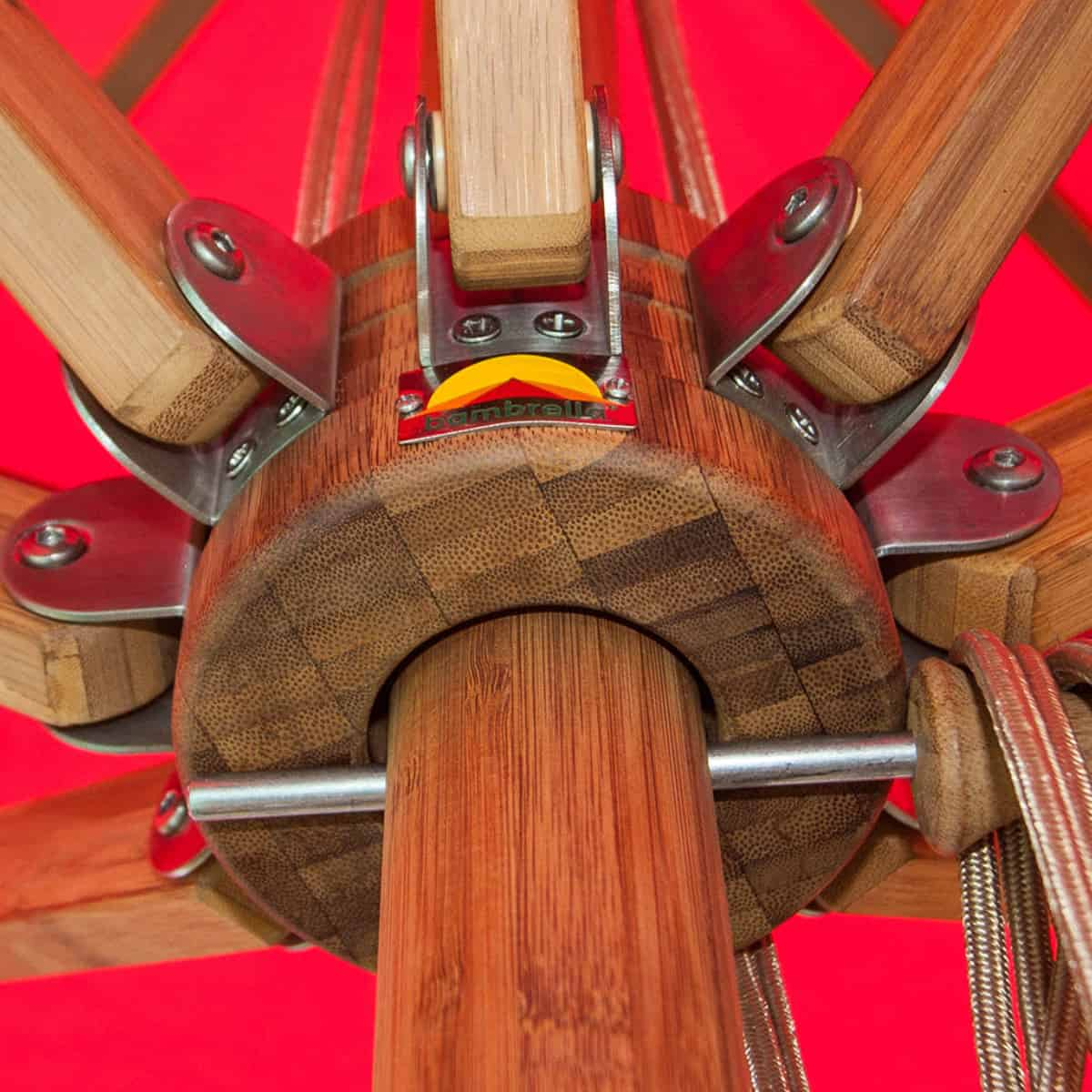
Wood is treated to resist insects, decay and weather damage, but it tends to fade after extended sun and rain exposure. Additionally, wooden poles may be less durable than aluminum and fiberglass ones and can snap in strong winds. Many manufacturers provide faux wood finishes on their metal or fiberglass models. This is a good option if you want the look of wood but the strength of metal or flexibility of fiberglass.
SHOP WOOD UMBRELLAS
Metal
Stainless steel and aluminum patio umbrellas have a sleek modern vibe that complements minimalist decor and wide open spaces. Stainless steel is very strong and has natural corrosion-resistance thanks to its chromium and nickel content. However, harsh saltwater environments can cause some corrosion to occur. Marine-grade stainless steel is strengthened and made more corrosion-resistant by 2-3% of molybdenum. This makes stainless steel umbrellas great choices for coastal areas or on yachts. For even more protection, stainless steel can be powder-coated.

Aluminum is inexpensive, lightweight and durable, making it a great choice for outdoor sun shades. Most aluminum frames are powder-coated or anodized for corrosion resistance and other signs of wear. The powder-coating process leaves a thin weather-resistant layer that is much more durable than a simple coat of paint. Powder-coated aluminum comes in many UV-resistant colors and finishes. This makes it easy to match any decor style. Aluminum is naturally strong and flexible. This allows it to be shaped into unique and interesting forms that wood cannot achieve. It also comes in a wide variety of finishes, which helps it coordinate with other outdoor furniture pieces. Aluminum will bend but not break in high winds, although it can warp after prolonged exposure. As an added benefit, aluminum is environmentally friendly since it’s recyclable.
SHOP METAL UMBRELLAS
Fiberglass
Outdoor umbrellas with fiberglass poles and frames are among the most durable on the market. Fiberglass is lightweight, strong and far more flexible than wood or aluminum. This flexibility allows it to bend without breaking, in even the most severe wind storms. Fiberglass does not rust or rot, allowing it to perform well in wet conditions.

It is usually more expensive than other materials. However, it can handle extreme weather for many years. This makes it a good long-term investment. Fiberglass umbrellas are available in several colors, which helps them blend into any outdoor color palette. Many modern deck umbrellas pair fiberglass ribs with aluminum poles to reap the benefits of both materials. Tilt and crank lift features are also available on most fiberglass parasols.
SHOP FIBERGLASS UMBRELLAS

Does the material used for joints and hardware really matter?
The materials for patio umbrella frames, poles, and ribs are important. So are the parts that hold everything together and help the shades work properly. Jointed and hinged parts must handle the rigors of frequent use and stress of the elements. They have to be strong and repeatedly perform a variety of movements without losing structural integrity.
Stainless steel, aluminum or brass joints and crank handles are durable and resist corrosion. Molded nylon hubs are ideal for most settings, although steel and teak are commonly used as well. Rib ends or tips are available in the same materials as their frames as well as rubber or silicone composites or plastics like HDPE.
What canopy fabric should I use for my backyard shade?
Choosing your canopy material is one of the most important decisions when buying a market umbrella or cantilever shade. The color or pattern is the most visible part of the umbrella. It also protects you and your kids from the sun’s heat and glare. And, most importantly, provides protection against UV radiation. Umbrella canopies are made from many materials with unique physical characteristics, benefits, drawbacks and cost considerations.
Unless you opt for a tiki-themed backyard with a thatch canopy, you will need to select a durable outdoor fabric. Some umbrella fabrics are coated with PVC or styrene-acrylic to increase weather resistance. However, the process has the drawback of decreasing the textile’s tensile tearing strength [Eltahan 2017]. Here are a few of the more common canopy material options and brands.

Acrylic – Sunbrella®
Sunbrella solution-dyed acrylic fabric is the best choice for both homes and businesses. It works well for many outdoor uses. It’s strong against the weather and keeps its color for years. You won’t need a patio umbrella replacement canopy for a long time. Sunbrella fabric comes in many solid colors and patterns. It is used for outdoor umbrellas, shades, awnings, upholstery, and pillows. Sunbrella umbrellas can be found at luxury resorts around the world and provides premium UV protection.

Acrylic – Sunbrella®
- Material – 100% solution-dyed acrylic fabric
- UV Protection – Yes – 98%
- Fade Resistant – Yes
- Mildew Resistant – Yes
- Water Resistant – Yes
- Cleaning – Soap, water & even bleach
- Permeable – Yes
- Pricing – Premium
- Warranty – 5 to 10-year limited warranty against fading (based on grade)
- Other – Greenguard & Skin Cancer Foundation certified
Other popular acrylic brands include Outdura, Suncrylic and Spuncrylic.
Polyester – Pacifica®
Pacifica polyester outdoor fabric is rich in color and luxurious to the touch. Its special fibers keep color up to four times longer than regular polyester. They also have similar qualities to acrylic but cost less. It provides protection against UV rays, although less than alternative outdoor fabrics. Pacifica is available in 20 standard solid colors.
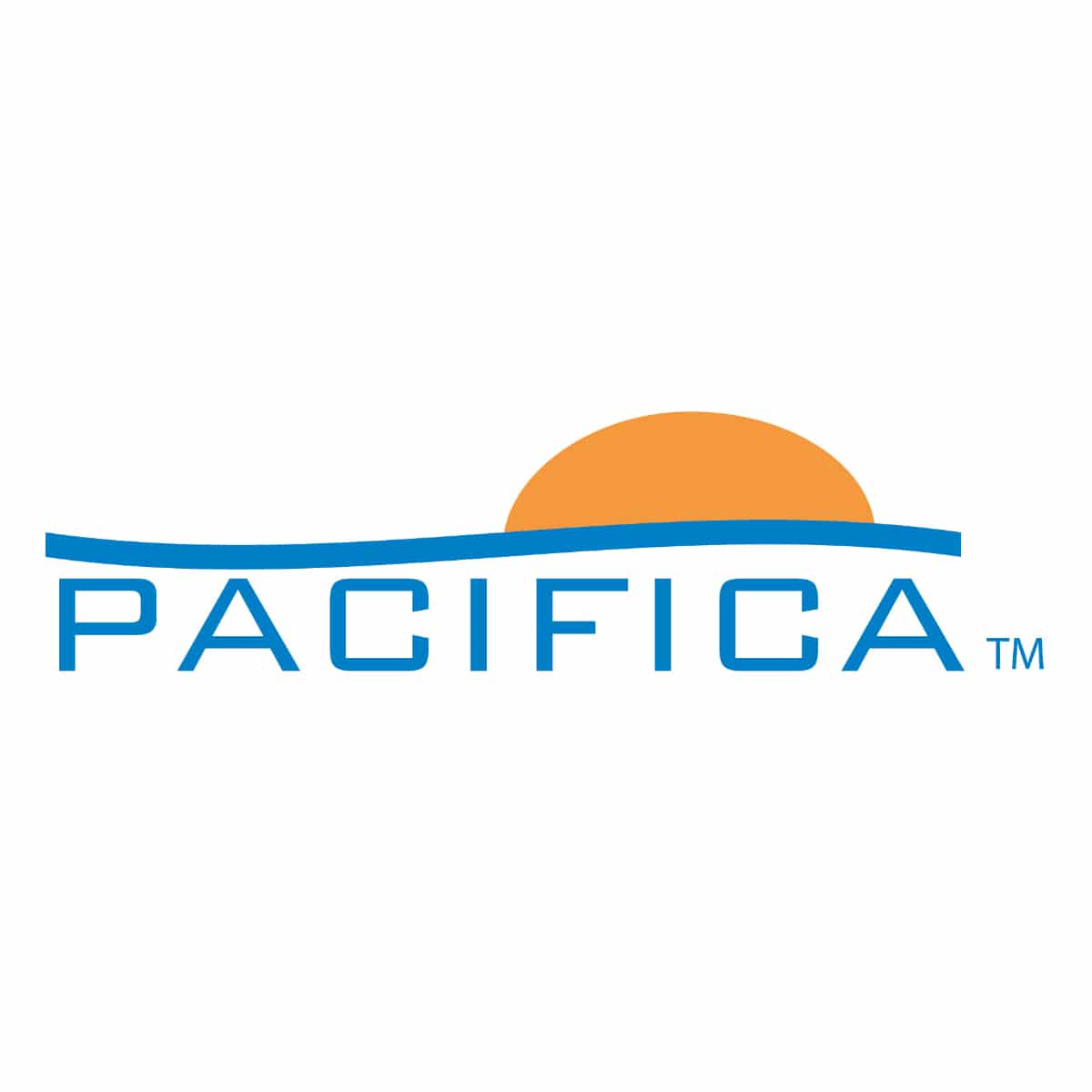
Polyester – Pacifica®
- Material – 100% solution-dyed polyester fabric
- UV Protection – Yes – UPF 40
- Fade Resistant – Yes, but fades more easily than acrylic
- Mildew Resistant – Yes
- Water Resistant – Yes
- Cleaning – Soap & water
- Permeable – Yes
- Pricing – Mid-range
- Warranty – 4-year limited warranty against fading
- Other – Soft to the touch
Olefin – Texsilk®
Texsilk olefin fabric is an environmentally responsible outdoor material that provides a high degree of UV radiation protection. It’s stain-resistant and durable enough to withstand bleach and chlorine cleaning. Texsilk is available in over one hundred solid, striped and checked patterns.
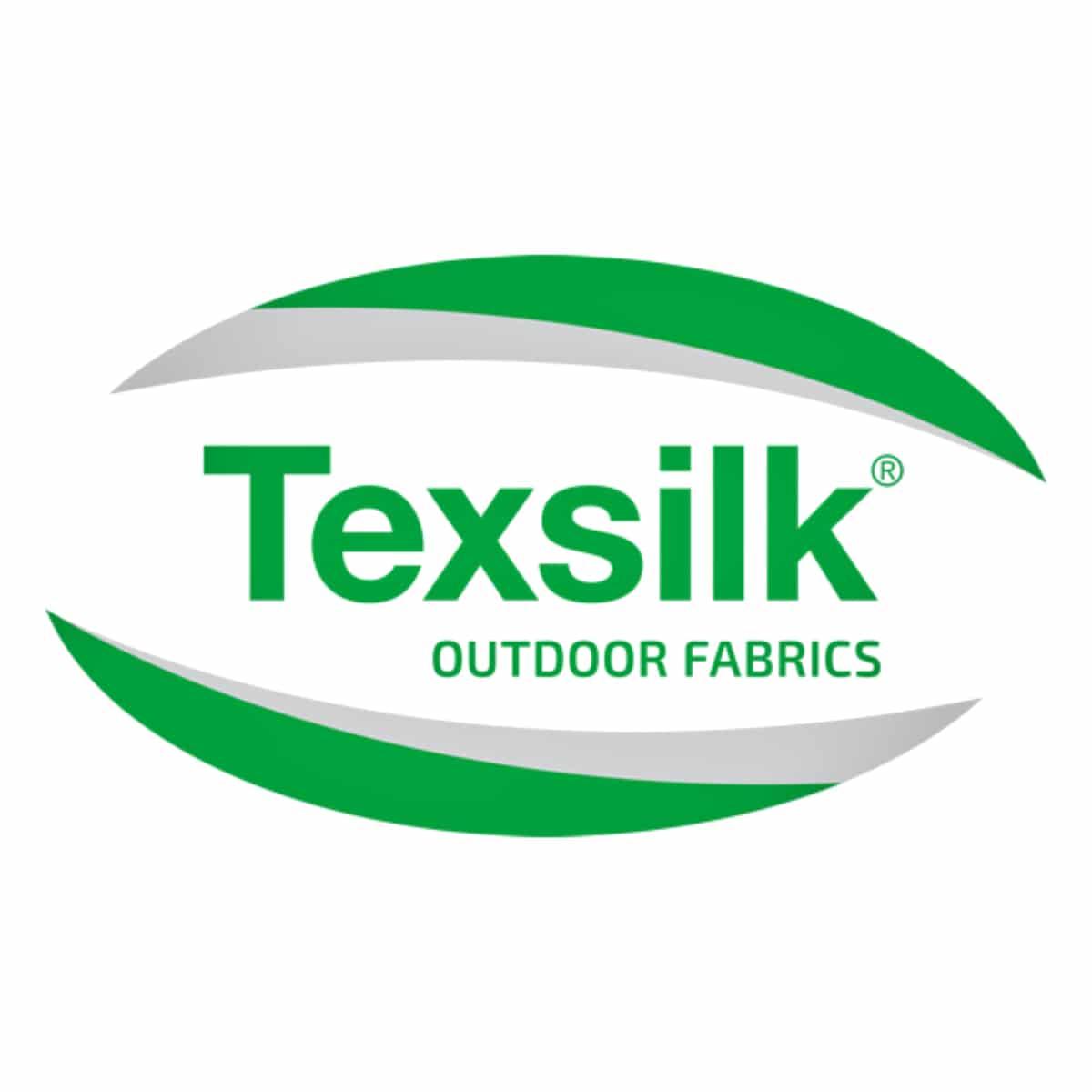
Olefin – Texsilk®
- Material – 100% solution-dyed synthetic polyolefin fabric
- UV Protection – Yes – UPF 80
- Fade Resistant – Yes
- Mildew Resistant – Yes
- Water Resistant – Yes
- Cleaning – Soap, water & even bleach
- Permeable – Yes
- Pricing – Economy
- Warranty – 2-year limited warranty against fading
- Other – OEKO-TEX certified. Eco-friendly – 100% recyclable
Polyethylene – Coolaroo®
Coolaroo polyethylene fabric was created to withstand extreme Australian weather conditions. Its unique, patented yarn weave allows cooling breezes to pass through the umbrella fabric, while it repels the heat and harmful UV rays. Coolaroo is available in a limited variety of solid colors and woven patterns.
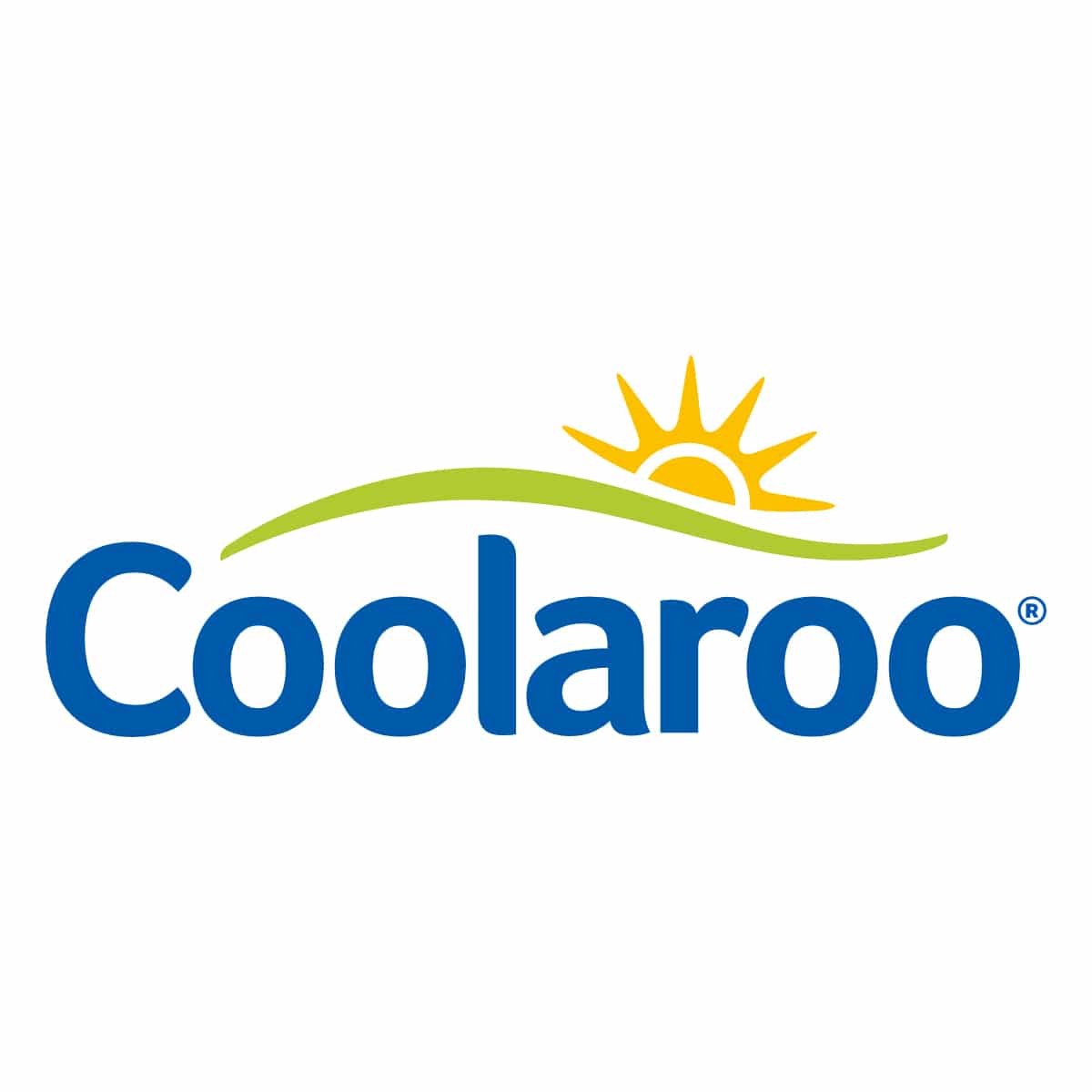
Polyethylene – Coolaroo®
- Material – Dyed high-density knitted polyethylene fabric
- UV Protection – Yes – 90%
- Fade Resistant – Yes, but it is semi-translucent
- Mildew Resistant – Yes
- Water Resistant – No
- Cleaning – Soap & water
- Permeable – Yes
- Pricing – Economy
- Warranty – 5-year warranty against UV light damage (excluding fading)
- Other – Encourages cool airflow – great for hot climates
Patio Umbrella Canopy Fabric Comparison
| Sunbrella | Pacifica | Texsilk | Coolaroo | |
|---|---|---|---|---|
| Material | Acrylic | Polyester | Olefin | Polyethylene |
| UV Protection | 98% | UPF 40 | UPF 80 | 90% |
| Fade-Resistant | Yes | Yes | Yes | Yes |
| Mildew-Resistant | Yes | Yes | Yes | Yes |
| Water-Resistant | Yes | Yes | Yes | No |
| Cleaning | Easy | Easy | Easy | Easy |
| Permeable | Yes | Yes | Yes | Yes |
| Pricing | Premium | Mid-Range | Economy | Economy |
| Warranty | 5-10 years | 4 years | 2 years | 5 years |
| Other | Gold Standard | Soft | Eco-Friendly | Translucent |
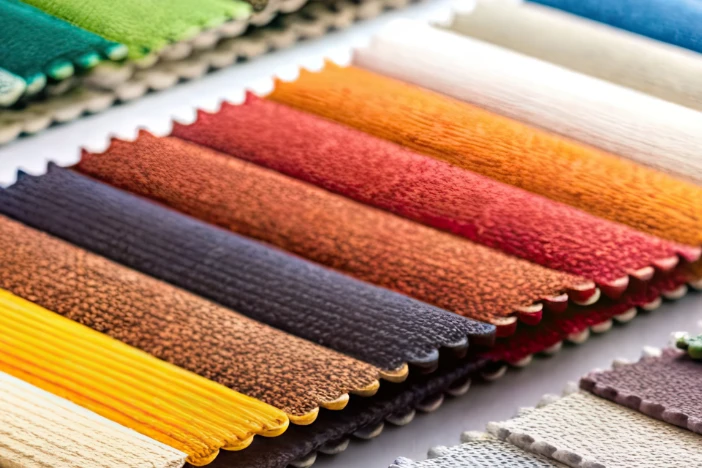
What umbrella color is best?
Holding canopy fabric constant, there are relative performance differences between colors. Darker colors absorb light and heat, while lighter ones reflect them. Deeper colors block UV rays better than lighter colors. Colors like navy, burgundy, forest green, and violet are effective. In contrast, lighter colors such as sky blue, pink, lime, and lilac are less effective. The temperature under dark canopies is a bit warmer. However, the height of most sun umbrellas makes this difference less noticeable. The closer a color is to white (e.g. beige, natural & cream), the more glare may become an issue. If you have a pool or light-colored walls and floors, consider using darker umbrellas. They can help reduce reflected light.
Dark canopies also tend to hide dirt better than light ones, so they require less frequent cleaning. However, dark and vibrant colors are more susceptible to fading. A striking black or chic dark taupe canopy will degrade to shades of grey and brown. Electric blue and fire engine red will fade to softer versions of their original colors in direct sunlight. Fading and structural damage will motivate you to buy a replacement canopy for your cantilever or market umbrella.
| Color | UV | Temp. | Fading | Glare | Cleaning |
|---|---|---|---|---|---|
| Dark | Stronger | Hotter | More | Lower | Less Often |
| Light | Weaker | Cooler | Less | Higher | More Often |
Aesthetics & More
There are also aesthetic considerations such as coordinating with the palette of patio furniture, architecture or even the environment. Earth tones convey a more organic and natural feel and are great for wooded areas. Jewel tones add rich color without overpowering the rest of the outdoor setting. Neutrals complement most decor and add subtle sophistication. Bold colors are eye-catching statements that add life and energy to a space.
Finally, there are psychological and physiological considerations depending on the purpose of your outdoor setting. Red increases your heart rate and hunger – making it a good choice for restaurants. Orange and yellow evoke cheerful and happy feelings – perfect for public gathering areas. Brown and green make people feel comfortable and relaxed – ideal for hardwood decks surrounded by trees. Blue conveys trust and health, but makes you thirsty and less hungry – a nice idea for a poolside bar.
Deck umbrellas built to last
You’ve considered the weather and climate conditions where you live and now know which materials will perform better. You’re making great progress but still have a few areas to brush up on. In the next section, we’ll look at bases and mounts to keep your shade stable.
Guide Sections
Frequently Asked Questions – Patio Umbrellas – Materials & Fabrics
What is the best material for outdoor umbrellas?
There are a variety of great weather and UV-resistant canopy textiles:
- Acrylic – Sunbrella
- Polyester – Pacifica
- Olefin – Texsilk
- Polyethylene – Coolaroo
References


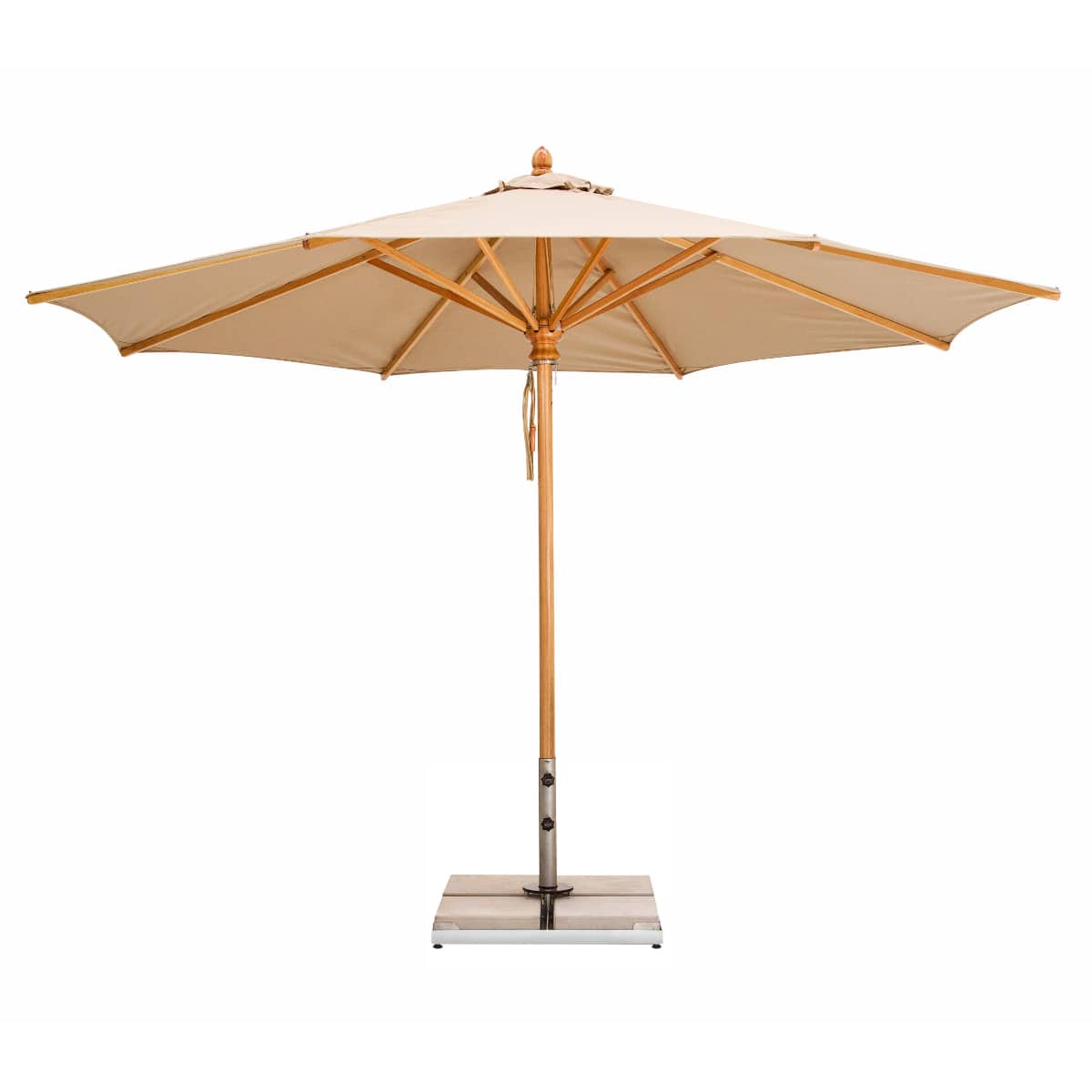
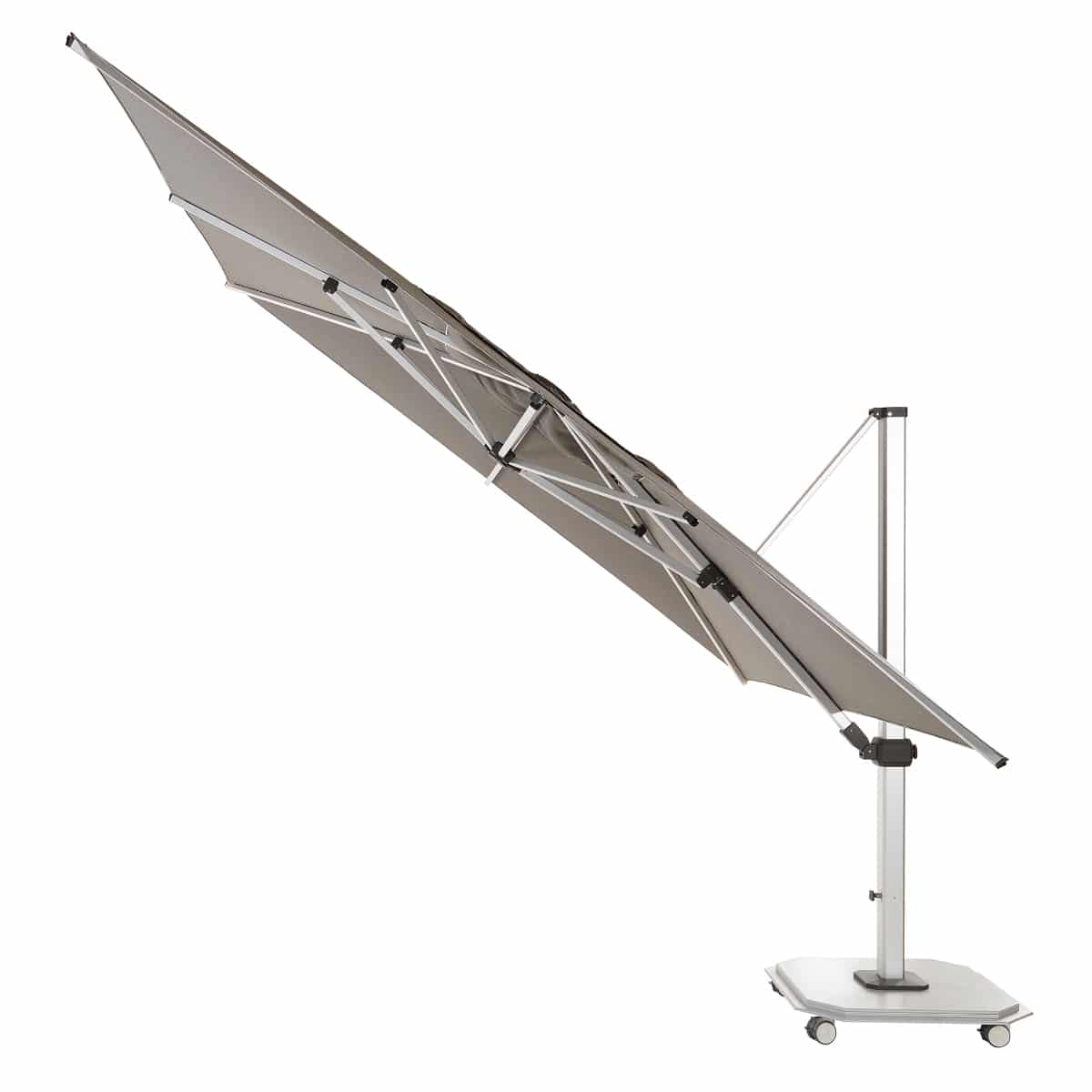

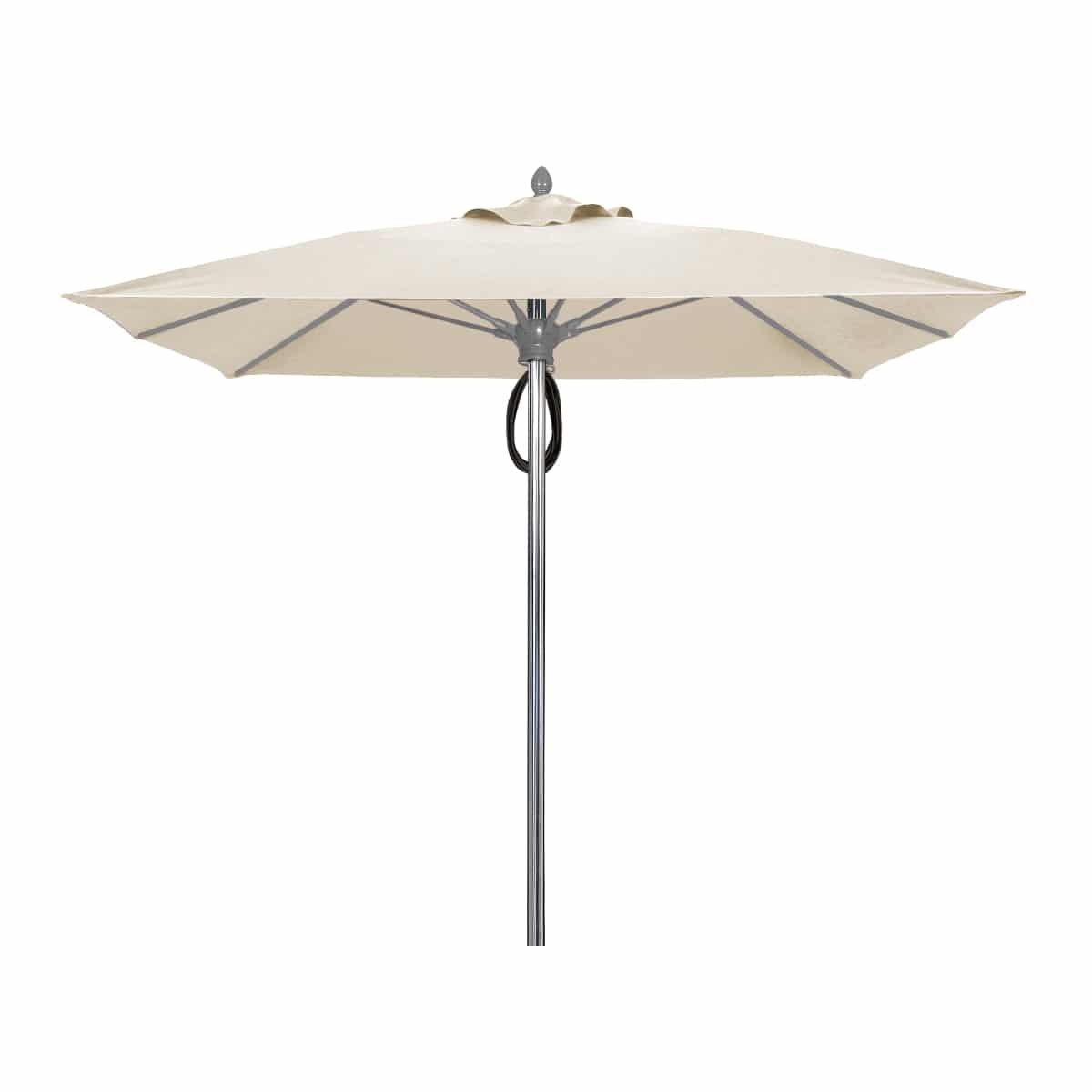
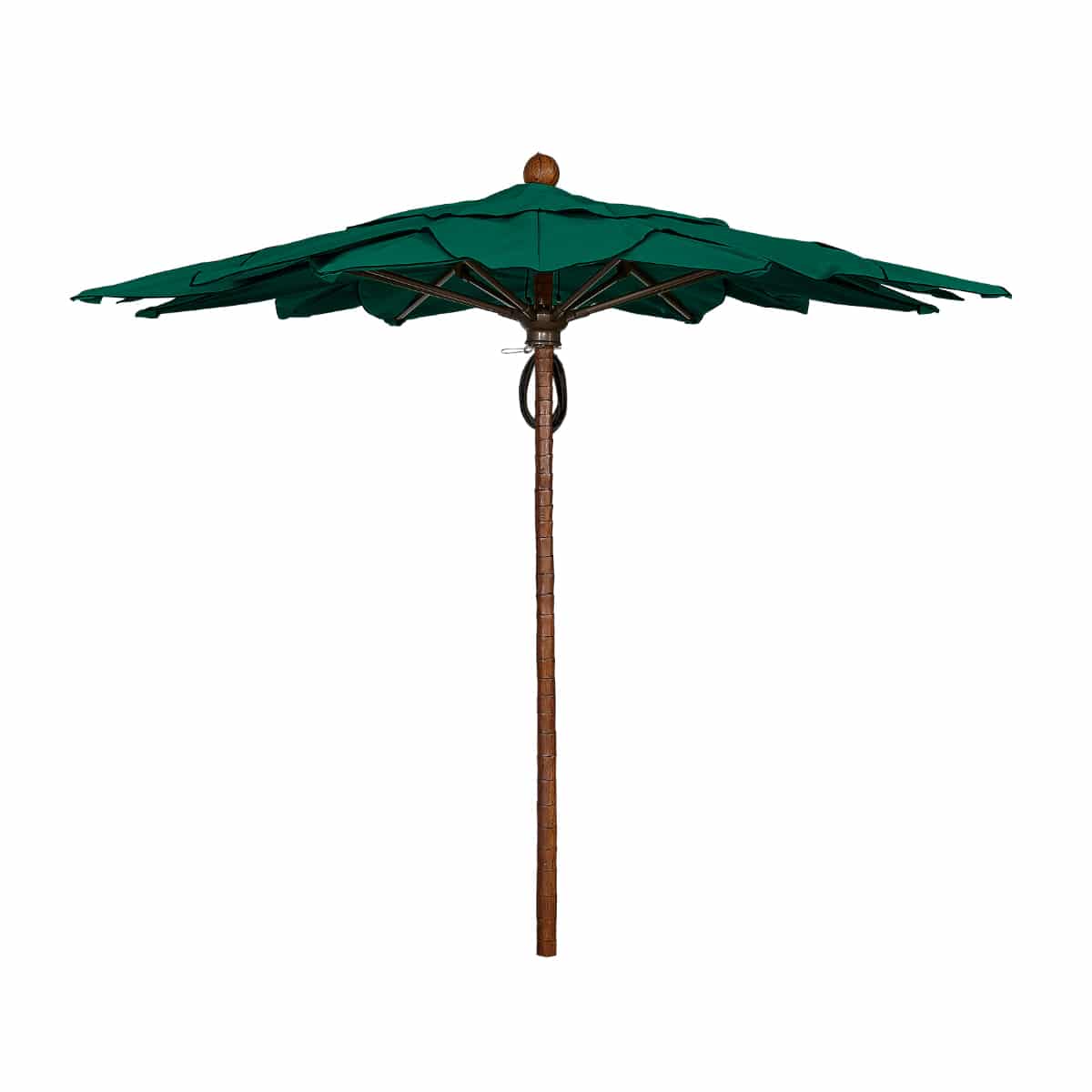
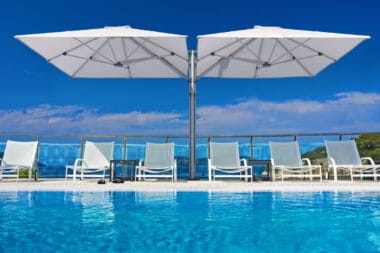
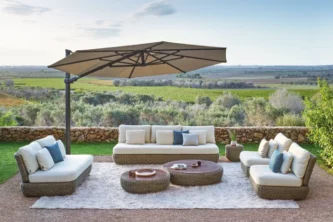

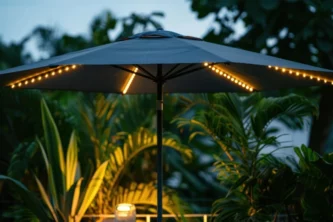
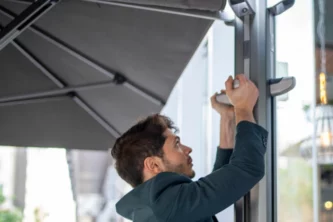
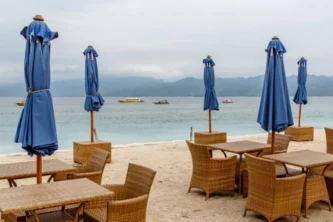




Leave a Reply